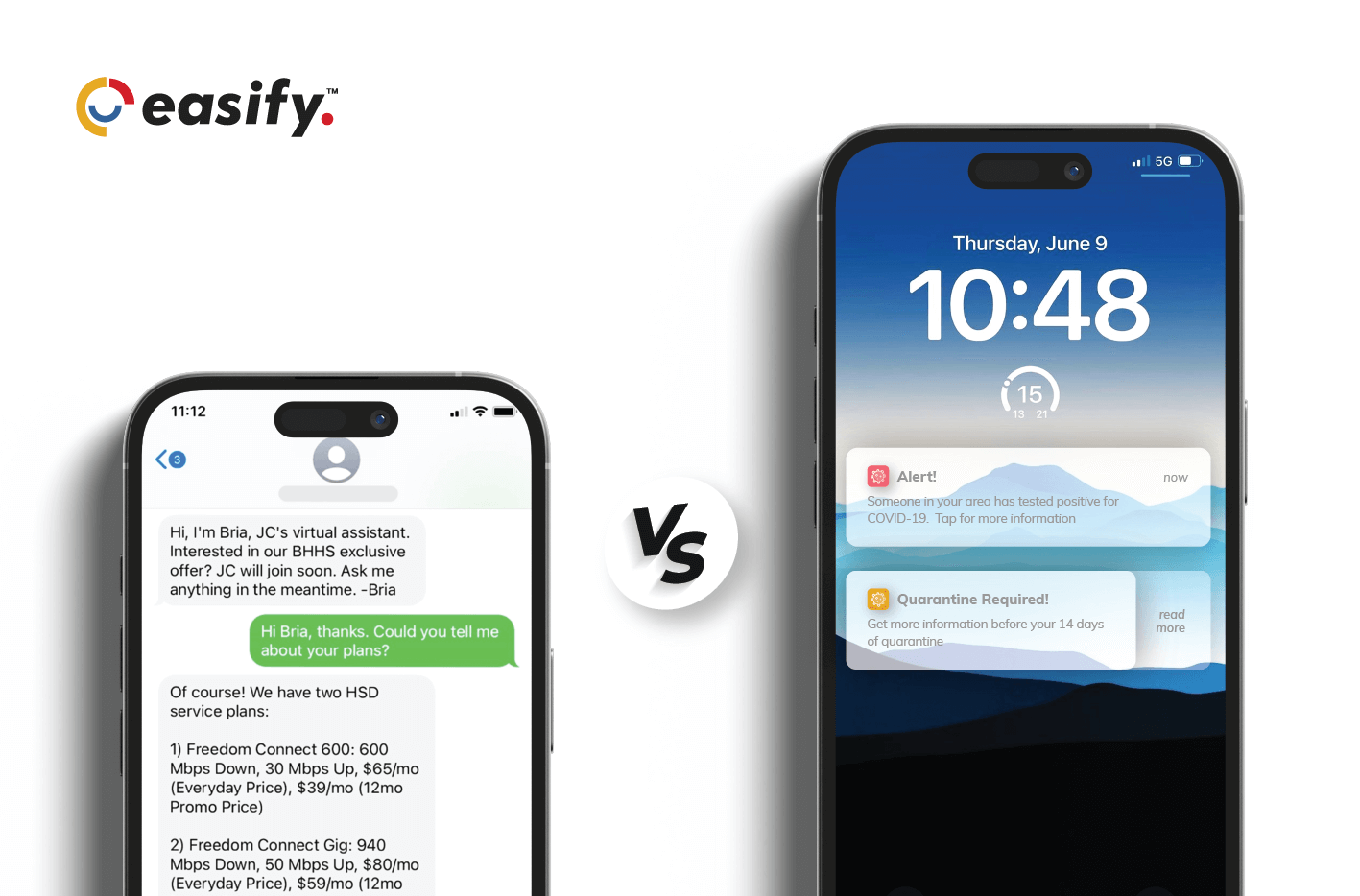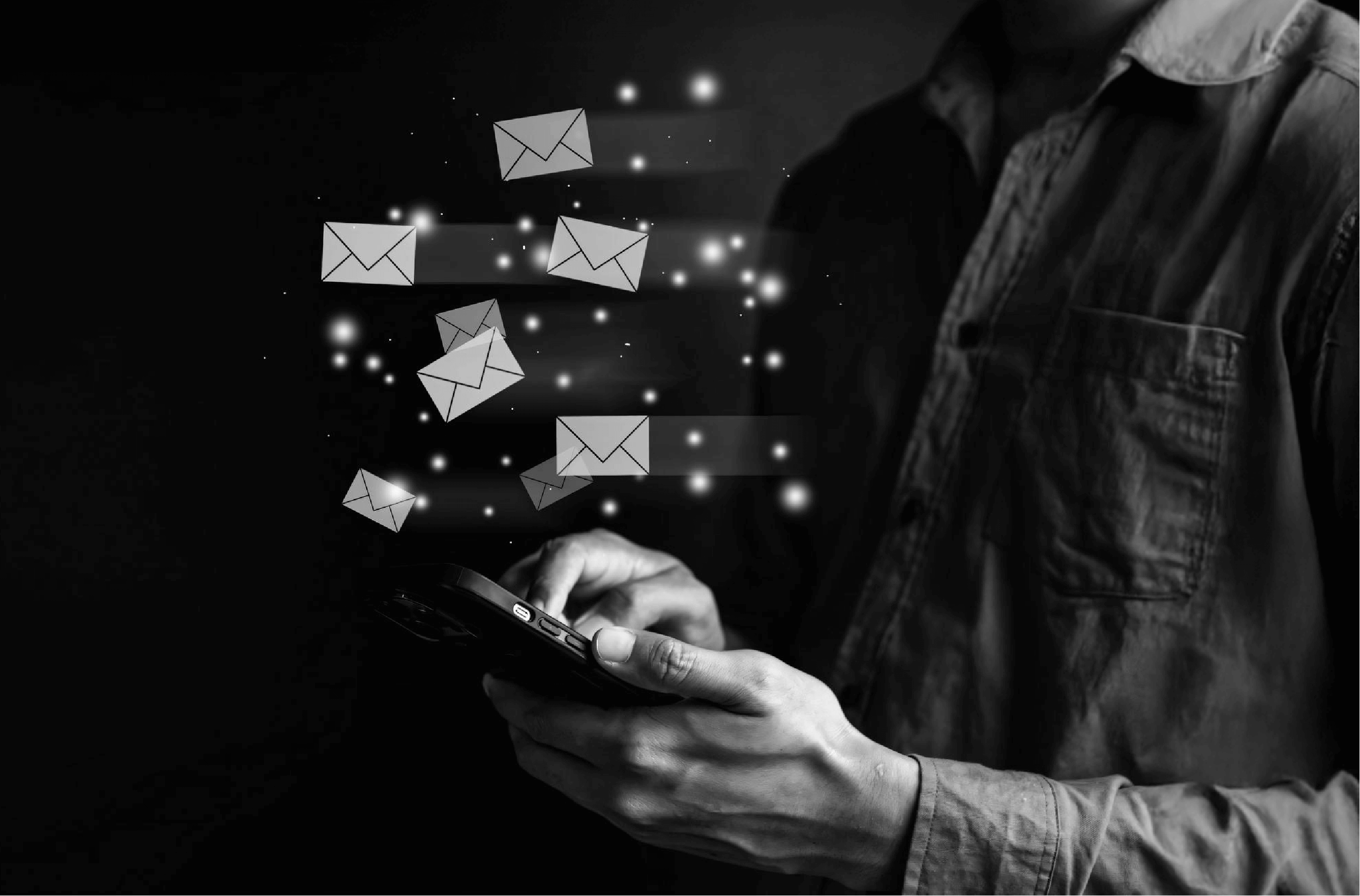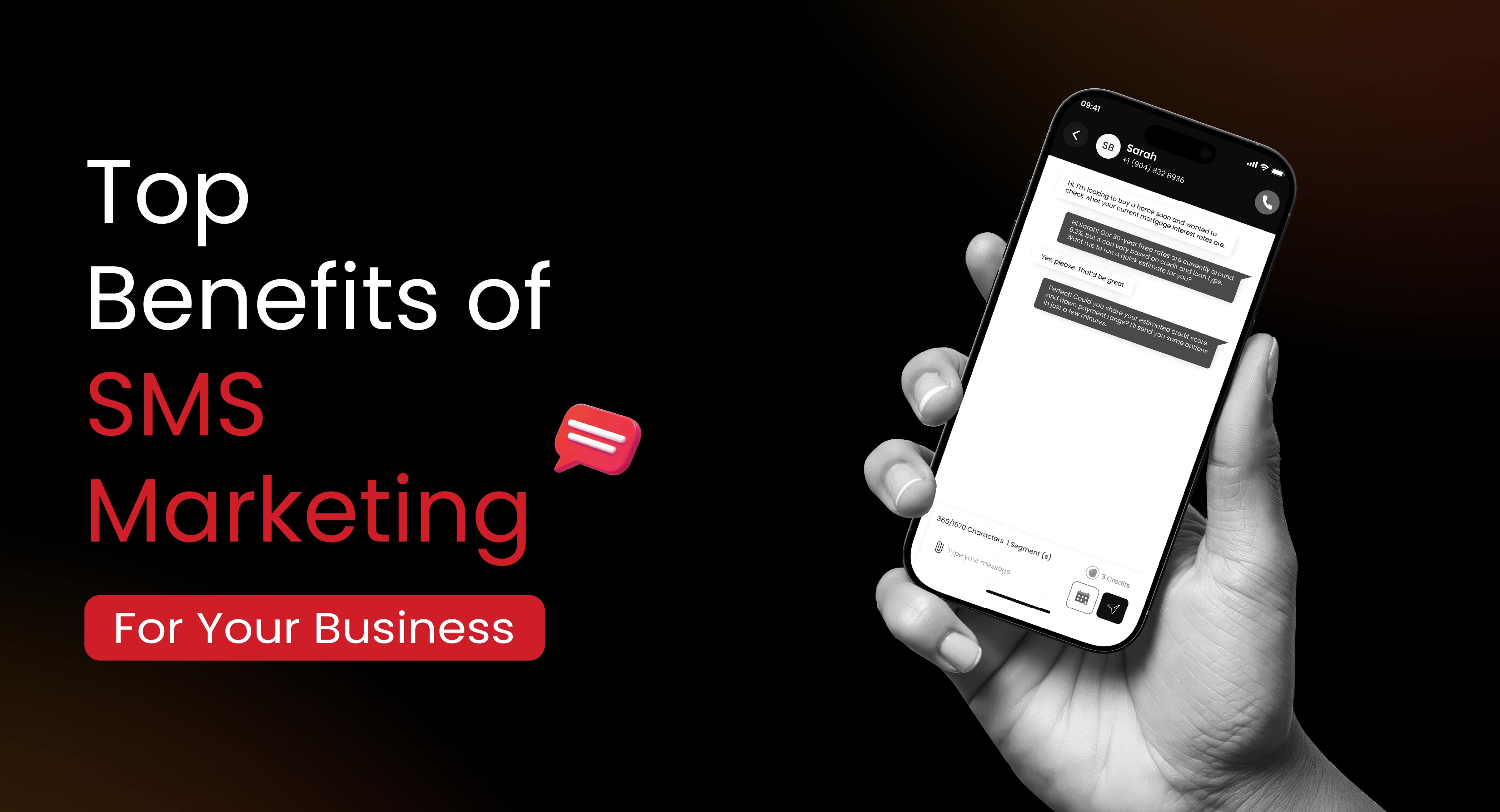
Ever found yourself wondering why some notifications pop up at the top of your screen while others slide into your text messages?
We've seen countless businesses grapple with their notification strategy, and let's be honest – it's not as simple as flipping a coin.
Let's get real for a second. If you're running a business in 2025, you're probably drowning in ways to reach your customers. Should you ping them through an app? Send a text? We're here to help you navigate these waters without losing your mind or your customers.
Push notifications or SMS? Which is the way to go?
What are SMS Notifications?
Remember getting your first cell phone? That satisfying ding of a new text message? Well, SMS notifications are exactly that – good old-fashioned text messages. They're like that reliable friend who always shows up. No internet needed, no fancy apps required – just a phone number and boom, you're connected.
Take our local dentist's office, for example. When they switched from phone calls to SMS reminders, missed appointments dropped to nearly zero. Why? Because unlike dodging phone calls, people actually read their texts!
What are Push Notifications?
Now, push notifications are those sneaky little messages that pop up on your phone when you least expect them. "Your favorite pizza place has a 50% off deal!" stomach growls Thanks, app, now we're all hungry.
These are the new kids on the block – they need an app installed and internet connection to work, but boy can they do some cool stuff. Think images, GIFs, even buttons you can tap right from the notification.
Why Use SMS Notifications?
Here's the thing about SMS – it's like the backbone of communication. Everyone, and we mean everyone, can receive texts. Your tech-savvy teen? Check. Your uncle who still uses a flip phone? Double check.
And if you’re wondering whether SMS still holds power in a world full of emails and push notifications, let’s talk numbers. 98% of SMS messages are read within 3 minutes. That’s nearly instant engagement. No other channel - even emails or social media can match that level of attention.
Whether it’s a time-sensitive alert, an appointment reminder, or a limited-time deal, SMS ensures your message gets seen. Chances are, it’ll get acted upon as well - fast.
In a world where inboxes are overflowing and notifications are easy to miss, SMS stands out as the most effective, no-nonsense way to communicate.
When to Use SMS?
Which are the ideal situations to use text messages? Let's paint a picture:
- Your doctor's appointment is tomorrow: Remembering appointments isn’t always easy when you’re caught up in the chaos. A simple text reminder keeps you on track.
- Your bank needs to verify it's really you: A suspicious transaction? A login attempt from a new device? SMS authentication swoops in, keeping your accounts secure in real time.
- Your flight's been delayed: You’re already at the airport, coffee in hand, and then - an SMS updates you instantly. No need to scroll through emails or refresh an airline app.
These are SMS moments. Why? Because they're too important to risk getting delayed or getting lost in the internet rush.

Why Use Push Notifications?
Push notifications are like having a billboard that only shows up when your customer needs to see it. Plus, they can do some pretty nifty tricks:
Picture getting a notification from your food delivery app right when you're walking past their restaurant. That's the magic of location-based pushing. Or tapping a notification and landing directly on a specific product page? That's all deep linking at work.
When to Use Push Notifications
Push notifications are your best friend when:
- You want to show off that gorgeous new product photo: With a push notification, you can send it straight to your users’ screens. No need to hope they stumble across it in their feed. Best way to grab attention, right?
- Your app has a cool new feature: You’ve worked hard on this update, and now it’s live! A push notification lets users know immediately. Include a button that takes them straight to the feature, so they can try it right away.
- You're running a flash sale: Time-sensitive deals need speed. Add a countdown timer or a one-tap “Shop Now” button to drive instant action.
- You need to share breaking news: Whether it’s a major industry update, a sports score, or a must-know event, push notifications deliver the news instantly - before your audience even thinks to check their feeds.
- Your game has new levels ready: A push notification brings your users back into action with a simple “New levels unlocked! Ready to play?”- just enough to spark excitement and re-engagement.
Differences Between Push Notifications and SMS

Let's break it down with some real talk. Think of SMS as your trusty bicycle – reliable, gets you where you need to go, works in all weather. Push notifications? They're more like a fancy electric scooter – more features, more fun, but you need a charged battery and smooth roads.
SMS works everywhere but keeps things simple. Push notifications need more setup but can do backflips with your content. Plus, SMS might cost you per message, while push notifications are usually free after setup.
The key differences?
Delivery Method
- Push Notifications: Sent through an app and require an internet connection.
- SMS: Sent via mobile networks and do not require internet or an app.
Device Requirement
- Push Notifications: Only work on smartphones with the app installed.
- SMS: Works on all mobile phones, including basic feature phones.
Content Type
- Push Notifications: Can include text, images, GIFs, buttons, etc.
- SMS: Mostly text-based, sometimes includes links, emojis, or MMS for images/videos.
User Engagement
- Push Notifications: Can be interactive with quick action buttons.
- SMS: Supports direct replies and two-way communication.
Read Rate
- Push Notifications*: Can be dismissed or ignored, lower open rate.
- SMS: Higher open rate.
Use Cases
- Push Notifications: App updates, reminders, promotions, and engagement-driven messages.
- SMS: Urgent alerts, OTPs, transactional messages, appointment reminders, and promotions.
Opt-in Requirement
- Push Notifications: Users must enable notifications in the app.
- SMS: Users must provide their phone number and consent to receive messages.
Reliability
- Push Notifications: Depend on app installation, internet access, and device settings.
- SMS: More reliable since it works without internet and reaches all types of phones.
Benefits of SMS Text Messages Over Push Notifications
Why do businesses still swear by SMS? Simple: everyone reads their texts. We're talking 98% open rates. The open rates of push notifications vary according to industries. But the average number falls somewhere between 0-10.
Plus, SMS works everywhere – no internet required. No matter how much technology advances, sometimes the old-school methods just work better.
How SMS Text Messages Enhance User Engagement
- Instant Visibility: Emails might sit unread in the inbox. Push notifications might get swiped away. But texts? Text messages land directly in the recipient’s inbox - where they’re almost always seen. 98% open rates, remember?
- Fast Response Times: People check their texts within minutes. This makes SMS perfect for time-sensitive updates. For example: flash sales, appointment reminders, exclusive offers, etc. Whether it’s a last-minute deal or an important alert, SMS delivers results fast.
- Personalized Communication: SMS feels more personal than other channels. Here are a few tips to personalize your messages:
- Address users by name
- Send tailored offers based on their preferences
- Create two-way conversations that make them feel valued
The result? Higher engagement and better customer relationships.
- Encourages Action: Whether it’s a “claim your discount” or a “confirm your appointment” link, SMS makes it easy for users to take action. No extra steps required.
- Re-engages Inactive Users: Customers who haven’t interacted in a while? A friendly text can bring them back. “Hey, we miss you! Here’s 10% off your next order” is all it takes to re-engage and boost conversions.
- Universal & Reliable: SMS works on any phone, anywhere, with no apps or internet required. It doesn’t matter if your audience is using a smartphone or an old flip phone. They’ll receive your message - guaranteed.
When it comes to engagement, speed, and reliability, SMS is hard to beat. If you want to connect with users where they’re most active, texting is your best bet.
SMS Text Message Best Practices
Alright, let’s get down to the part you’ve been waiting for. Want strategies on how to nail your SMS game? We’ve got a few for you:
Keep it concise: Nobody wants to read War and Peace in a text message. Get to the point but keep it friendly!
Time it right: Sending a promo text at 3 AM? That's a quick way to lose subscribers. Stick to business hours.
Make it personal: "Hey Sarah, we have a 15% discount just for you!" beats "Grab 15% off" every time.
Don't be too frequent: Space out your messages. Let's not suffocate the customers with too many messages, okay?
Opt-in and Opt-out: Make sure that all of the texts you send your clients come with an opt-out option for them. Failure to do so can result in non-compliance and penalties.
“Start SMS Text Messaging with Easify Today
How Easify Helps Businesses with SMS Campaigns
Here's where things get exciting. Easify isn't just another messaging platform – we're talking about your new communication command center. Think of it as having a super-smart assistant who knows exactly when, how, and what to text your customers.
Key Features and Benefits
Let's break down what makes Easify special:
- A dashboard so simple that anyone could use it
- Smart scheduling to reach your customers at the best time
- Geo tagging for targeting audience based on their location
- Analytics that help you gain insights and build strategies
Steps to Get Started
Ready to jump in? Here's the game plan:
- Head over to Easify's website
- Import your contacts (don't worry, we'll guide you through it)
- Create a template and get it approved (compliance is key)
- Schedule your first campaign
- Watch the magic happen!
We have onboarding calls so that you don’t feel overwhelmed getting started with Easify. Like the name, we strive to make things easy for you. And remember, if you ever need help with absolutely anything related to Easify or your campaigns, we’re at your assistance 24X7!
Frequently Asked Questions
What is the difference between SMS and push notifications?
SMS or text messages are sent to a phone number. They work without an app or internet and support two-way messaging. Ideal for critical alerts, reminders, and promotions.
Push notifications, on the other hand, are sent from an app. They require internet and app installation, and can include images, GIFs, and action buttons. Best for app updates, engagement, and time-sensitive alerts.
What is the difference between push notifications and SMS on Facebook?
Push Notifications: Appear on your device when you have the Facebook app installed. Used for likes, comments, messages, and general updates.
SMS Notifications: Sent as text messages to your phone number. Used for login alerts, security updates, and important notifications when you're not on the app.
What is the difference between a push notification and 2FA by SMS?
Push Notification: App-based message, used for general updates, reminders, or authentication (e.g., approving a login request in an app).
2FA by SMS: A security feature that sends a one-time password (OTP) via text to verify identity during logins or transactions. More vulnerable to SIM-swapping attacks compared to app-based authentication.
Conclusion
Whether you're Team Push or Team SMS (or better yet, both), the key is knowing when to use each one. SMS is your reliable workhorse for must-read messages. Push notifications are your creative sidekick for engaging app users.
Ready to level up your communication game? Easify's got your back with the tools to make communication methods like SMS, emails, calls, voicemails, etc. work harder for your business. Why not give it a try?
Want to learn more about how Easify can transform your customer communication? Get in touch with our team today!

SMS marketing for MCA renewals helps providers retarget existing clients, automate renewal reminders, boost ROI, and increase repeat funding efficiently

Business text messaging with Easify helps you engage customers, automate follow-ups, and convert more leads through fast, simple, and effective SMS communication.

Easify is the ultimate group text messaging app that streamlines team and customer communication with instant, reliable, and scalable SMS messaging.